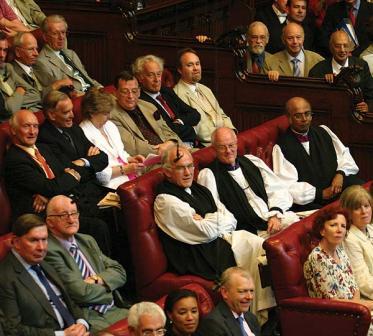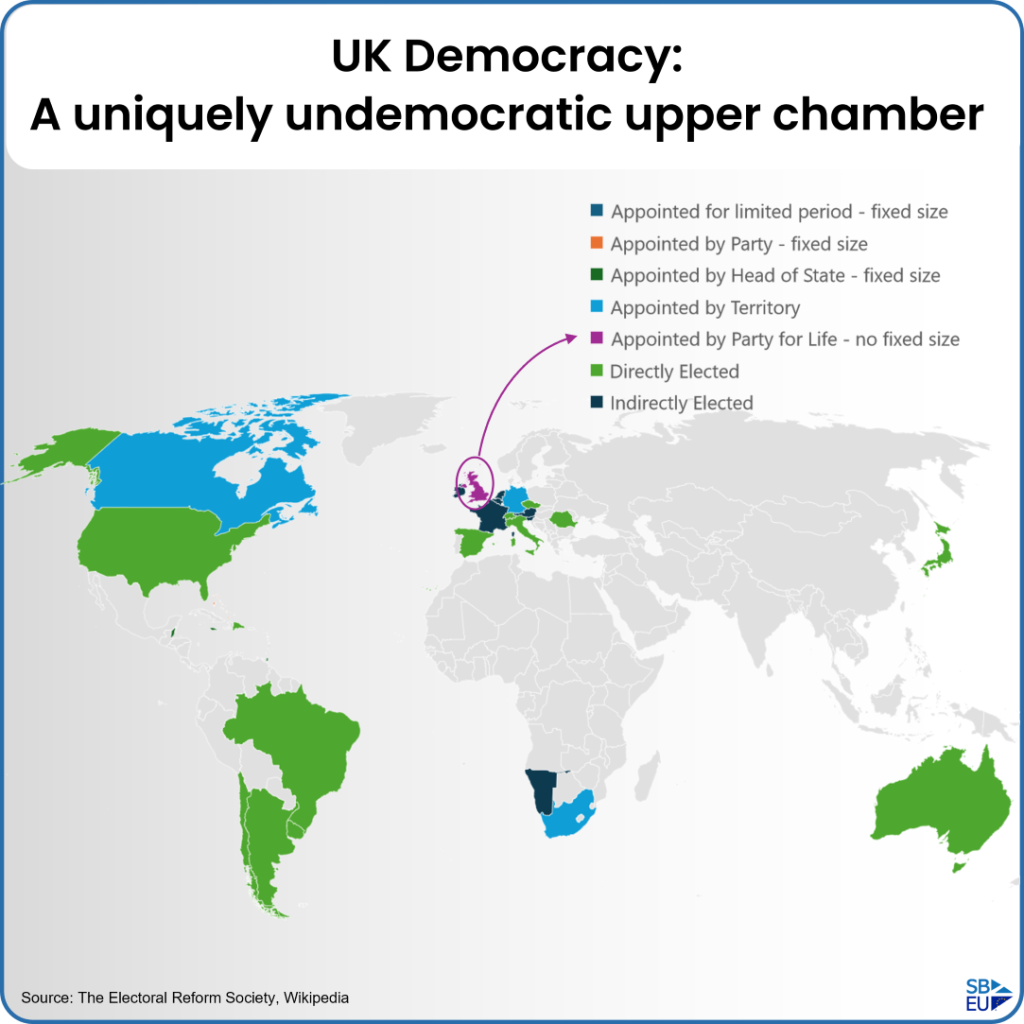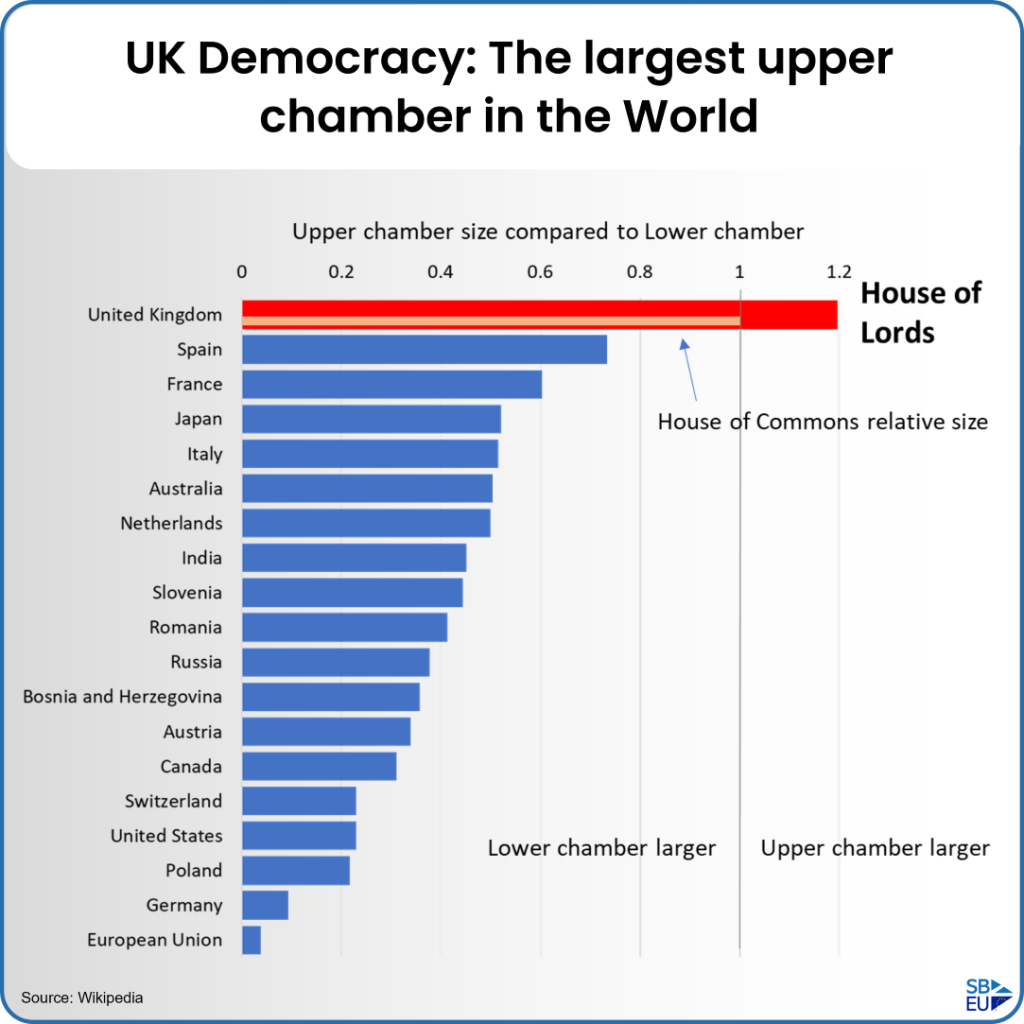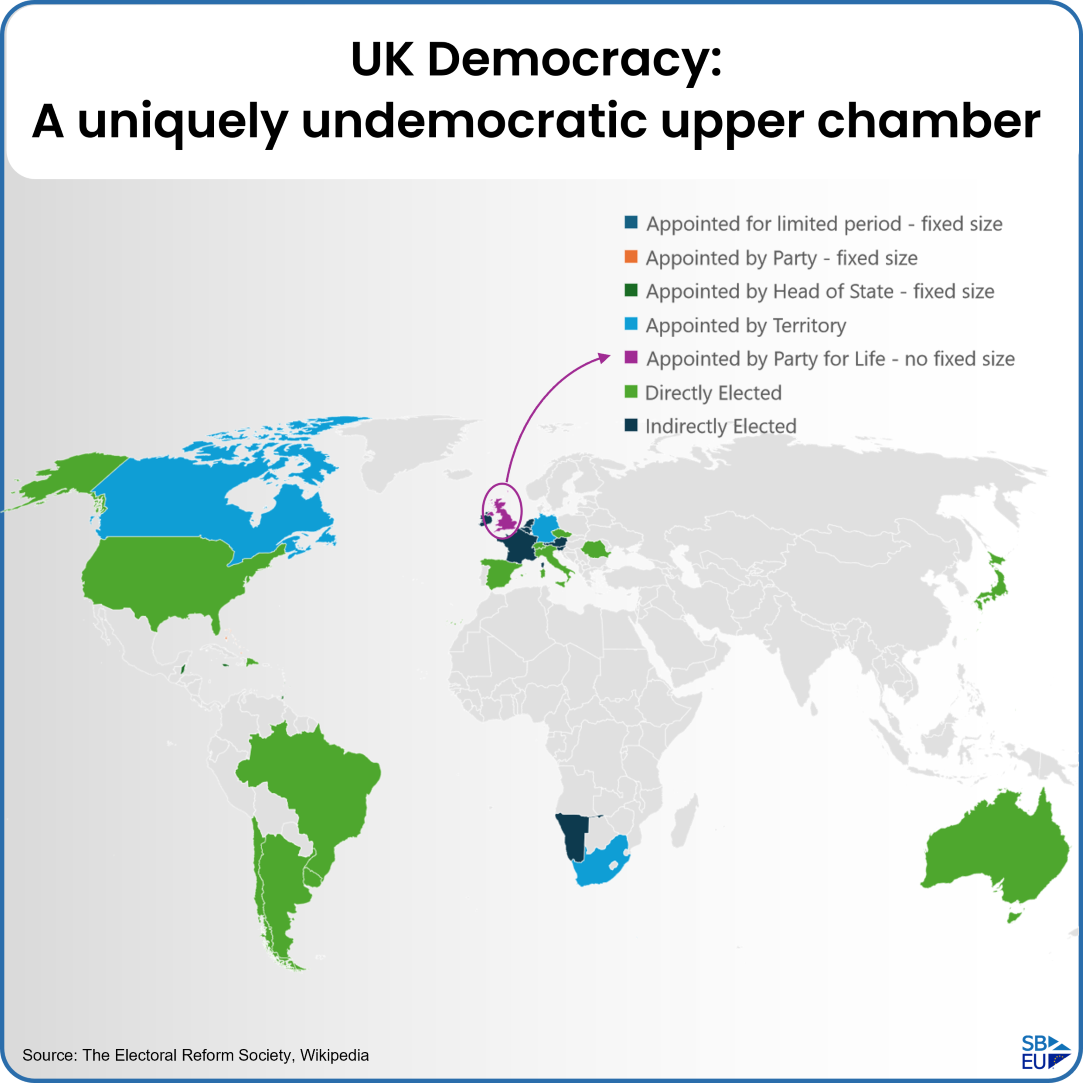The UK Parliament has by far the largest upper chamber in Europe – and no Scottish parties are represented, and never have been.
Compared to the size of the lower chamber (UK: House of Commons), the UK’s upper chamber (House of Lords) is about 1.2x the size. In every other European country it is elected – and much smaller than the lower chamber. This is because of the unique way in which the House of Lords works, with appointed-for-life members chosen by the UK ruling parties – together with a rag tag historic mix of clerics and others. It even still includes “hereditary peers” whose only claim to fame is being born into one of a few long-lasting “noble” families.
There are currently 785 sitting members. They are currently eligible for a £342/day “attendance allowance”, which is not taxed. Travel costs can also be claimed. In total the UK House of Lords costs about £105m/yr to run.

The UK has the only parliament with reserved places for clerics – aside from Iran.

Of the World’s 82 free democracies, some 32 have decided that they need an upper chamber – in the UK’s case this is the House of Lords. The others make do with one. Most democracies (63%) use elections to choose who sits in their upper chambers. The others have fixed size and appoint their representatives – mostly chosen by the Head of State in consultation with society and political parties (governing and opposition). Most are fixed term. Only the UK has no fixed size, representatives that are appointed purely by the governing – for life.

Because the UK chooses uniquely to have no limit on the size of its upper chamber, it has by far the biggest. In fact the only democracy in the World with an upper chamber bigger than its lower chamber!
A Scottish upper chamber
After independence Scotland would not reproduce the House of Lords structure. Instead the structure of a modern democracy would be adopted – for example a second chamber with representatives elected from different constituencies to the first chamber. For example in Germany the “Bundesrat” is made up of representatives of the various regions, whilst the “Bundestag” first chamber consists of elected members. In France the “National Assembly” and “Senate” are both elected, but using different systems and constituencies.
Sources

Leave a Reply